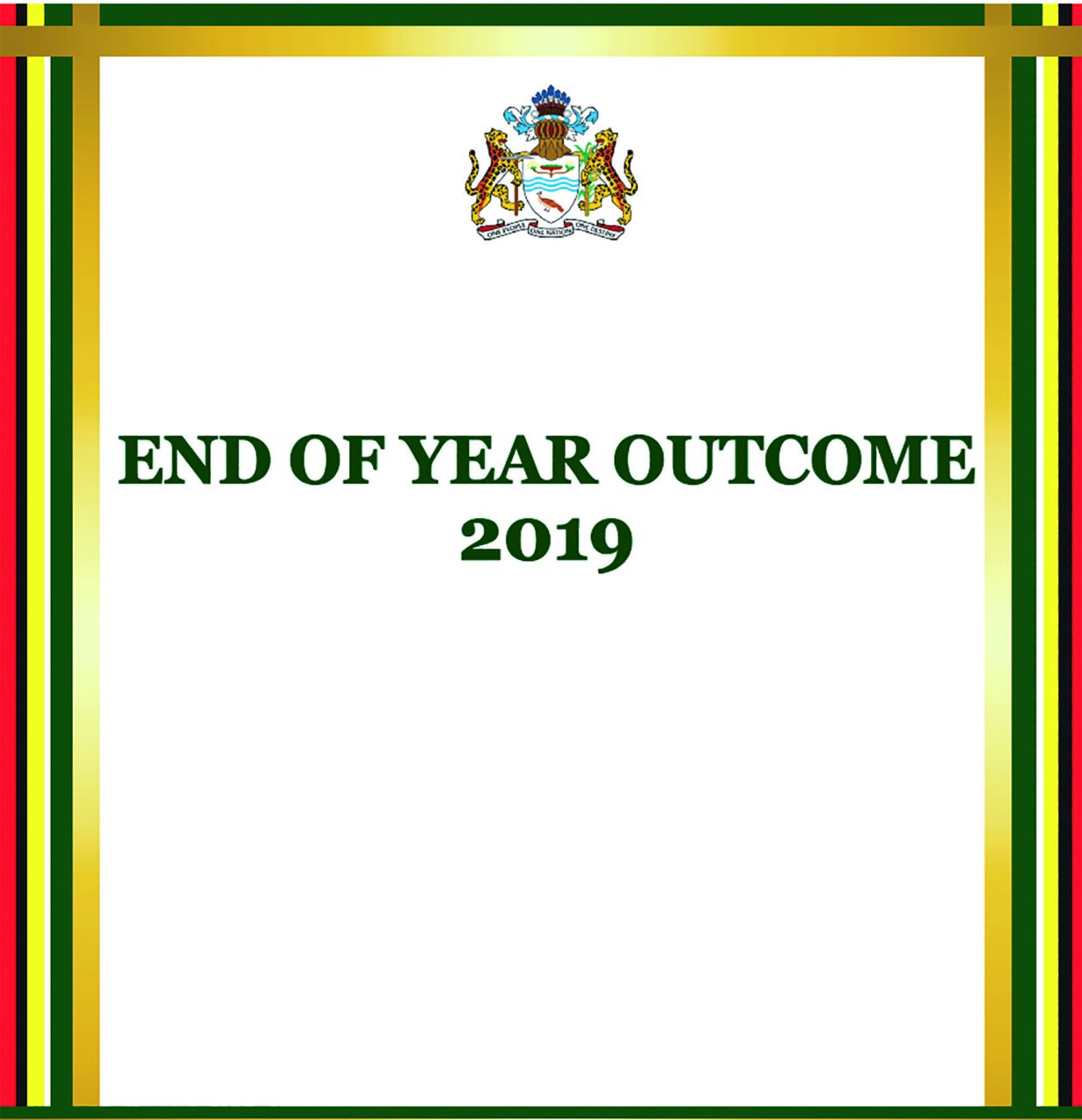…as Finance Ministry releases End-of-Year Report
The Finance Ministry has released its End-of-Year Report for 2019. While the report talks up the economic growth, it also shows major decline in several economic sectors in the economy.
 According to the Report, released on Wednesday, sugar production contracted by a sharp 11.8% in 2019, with the Guyana Sugar Corporation (GuySuCo) falling significantly short of its production target.
According to the Report, released on Wednesday, sugar production contracted by a sharp 11.8% in 2019, with the Guyana Sugar Corporation (GuySuCo) falling significantly short of its production target.
The Report also noted that poultry production did not recover sufficiently to overcome the decline recorded at the half-year. This resulted in a 7.8% decline in poultry production in 2019, which in turn led to a contraction of 3.5%. in the livestock subsector.
Additionally, the forestry subsector recorded notable gains at the half-year, which persisted into the third quarter; however, these were undone in the final quarter of 2019, resulting in a contraction of 3.9% for the entire year.
Fisheries experienced mixed outcomes in 2019, with finfish production increasing by 19.7% over the previous year, and shrimp production declining by 28%.
On the other hand, the Report noted that the quantity of paddy harvested in 2019 reached 1,049,874 metric tonnes, the highest level since 2015, when the industry attained record production of 1,058,129 metric tonnes.
Production in 2019 surpassed the 2018 harvest by 8.8%, or 84,755 metric tonnes, resulting in growth of 1% in the rice cultivation industry in 2019.
The manufacturing sector realised significant growth of 14.7% in 2019, the highest rate since 2013, when the sector grew by 8.2%. This achievement was bolstered by rice and other manufacturing, which expanded by 26.4% and 14% respectively.
Construction expanded for a fourth consecutive year, with growth reaching 3.1%, 0.2 percentage points above the rate achieved in 2018.
Stable
Despite these damning indicators, the report stated that the economy performed “creditably and remained stable”, with key macroeconomic variables continuing to be “favourable” and pointing to “sustained growth and investments for a successive year”.
According to the report, real GDP growth was an “impressive” 5.4 percent, with 4.3 percent recorded for the non-oil economy. The Ministry reported that balance of payments deficit fell to US$49 million, and foreign reserves climbed to US$575.6 million; with private sector credit rising by 8.6 percent; and inflation remained moderate at 2.1 percent.
It added that the stock of public debt fell to US$1,689.1 million, 32.7 percent of nominal GDP.
“Progress continued across several sectors in 2019, and there was focused effort in prioritising institutional strengthening and more evidence-based policymaking,” the report stated.
However, much of what was presented in the report appeared to be a public relations stunt by the Coalition Government, as many stakeholders, including the Private Sector, have been complaining of the economy being in a “terrible state”.
The last budget approved by Guyana’s National Assembly was one for the fiscal year ending 2019, which means that all expenditure for the first half of 2020 has been curtailed to a monthly one-twelfth of the previous year’s expenditure.
The new Government, however, will soon find out that Guyana as a country is “broke.”
Not only has the country’s general reserves been depleted to $0, but the account is also now running an overdraft to the tune of hundreds of billions of dollars.
This is in addition to an alarmingly depleted gold reserve. The state of affairs can be gleaned from the published balance statements of the nation’s accounts held by the Bank of Guyana.
Bank of Guyana
The Bank of Guyana, as part of its statutory requirements, published in the Official Gazette a Statement of Assets and Liabilities for the country.
The state of play, as illustrated in the May 23 publication of the Official Gazette, reveals that the General Reserve is -$290,667, 332.
Additionally, Public Deposits have been depleted to below $0, also recording a negative balance of -$88,629,401,855.
Guyana’s Contingency Reserve Account also reflects an alarmingly low amount of $2.3 billion.
When APNU/AFC took office in May 2015, the Bank of Guyana’s Statement of Assets and Liabilities reflected a completely different situation.
According to the records, when the coalition APNU/AFC took Office in 2015, Guyana’s gold reserves were stocked at $15 billion.
The latest figures show that the gold reserves have been depleted by the APNU/AFC administration to less than $1 billion, and now stand at $715 million.
This reflects a difference of $14.3 billion spent by the sitting Administration during its time in office, not accounting for the additional sales of gold that would have cycled through the financial system over the course of the administration’s five years in office.
In 2015, Guyana’s General Reserve had in its coffers just about $6 billion, while the Contingency Reserve held $4 billion. Today, those savings have been eroded to below zero dollars, to now reflect considerable overdrafts.
According to the May 2020 figures, the General Reserves now stand at minus $291 million, while the Public Deposits now account for an $89 billion red mark, or overdraft, against the country.
While the Contingency Reserve stood at $4.8 billion when the APNU/AFC Coalition took office, the current accounts reflect a balance of just about 2.3 billion.
Also, just recently, PPP/C Presidential Candidate Irfaan Ali, who is an economist by training, painted a gloomy picture of the current state of the economy, which he said is largely due to the lack of foresight by the incumbent APNU/AFC Coalition.
 According to the Report, released on Wednesday, sugar production contracted by a sharp 11.8% in 2019, with the Guyana Sugar Corporation (GuySuCo) falling significantly short of its production target.
According to the Report, released on Wednesday, sugar production contracted by a sharp 11.8% in 2019, with the Guyana Sugar Corporation (GuySuCo) falling significantly short of its production target.